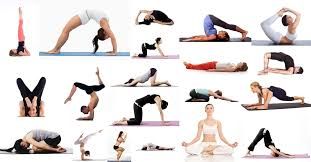
Yoga has recently gained a lot of popularity attracting people of different ages irrespective of their fitness level. There are various types of Yoga and some beginners might find it intimidating. So come let’s discuss the best moves for newbies and where to start your relaxing journey.
What is the best type of yoga for beginners?
Hatha Yoga is the best type of yoga for beginners because it focuses on basic poses and breath control.
Hatha Yoga suits those who are starting out with yoga since it concentrates on fundamental postures called asanas which help to build strength, flexibility and balance. Beginners can work with proper alignment and learn body awareness from a slower pace.
This style also incorporates pranayama (breathing exercises), which aids in calming the mind and improving focus. It prepares practitioners for more advanced forms of yoga by establishing a strong base in them which makes Hatha Yoga an excellent starting point for beginners.
How often should beginners practice yoga?
Beginners should do yoga twice or thrice every week to be consistent and avoid injuries.
It is ideal for newbies to practice yoga 2-3 times weekly. At this frequency, the body adapts gradually to meet the physical requirements posed by these asanas while allowing muscles to repair between sessions.
Regular practice builds routine, improves flexibility and strengthens without being hard on yourself. As one becomes more familiar with postures and techniques you may choose to practice more often. However, striking a balance between rest periods and practice is key in avoiding injuries while at the same time ensuring that progress achieved is sustainable.
What should beginners focus on during yoga practice?

Beginners should mainly focus on correct posture, breathing techniques, as well as being mindful of their own bodies.
It’s essential that newcomers pay attention to proper alignment when they start doing yoga so that they do not get injured and get all possible benefits from each pose. To safeguard oneself against injury while moving through poses safely and efficiently it is important to understand and apply correct posture.
Pranayama or breathing exercises are equally critical aspects since they support moving into physical positions as well as relaxation; this would make sense considering how these breathing exercises are vital in helping calm down our minds, improve focus and manage stress levels. Also by knowing their present limits and not overdoing things, it is possible to have a positive and mindful yoga experience.
Can yoga help reduce stress for beginners?
Yoga indeed reduces stress by helping individuals to stay in a relaxed and attentive state through profound breathing as well as gentle moves.
Initially, yoga is an extremely useful means of handling tension. The exercise entails deep mindful breaths which trigger the body’s relaxation mechanism that lowers hormones causing stress.
Gentle movements or postures help relieve physical tightness while meditative elements assist in calming the mind and making it more clear. With time, regular practice increases emotional balance and cultivates inner peace thus promoting resistance to stress among other health benefits. These effects can be quite beneficial to beginners leading to an overall enhancement of well-being.
What equipment do beginners need for yoga?
For beginners, they will need a mat for doing yoga and comfortable clothes. Also, blocks and straps can be used to provide support.
The start of practicing yoga does not require much equipment as it is open to all. A good quality yoga mat is important because it provides a firm, non-slip surface to keep the body safe during poses.
Comfortable clothing that allows free movement without restricting breathing should be worn by a beginner. Newcomers do not have to buy these devices but then they really help in gaining balance and making complicated moves more accessible in terms of greater depth and safety.
How long should a beginner’s yoga session last?
The beginner’s first session of 15-30 minutes gives ample time for warming up and cooling off.
Ideally, beginners should have training sessions which are 15-30 minutes longs. This timing helps integrate warm-ups, basic postures sets among other activities (cooling down). Reduced time frames may allow beginners to avoid exhaustion or stress while building endurance and familiarity with the practice.
The length of each session could however increase progressively along with comfort levels and accruing skills. Commencing with small-scale sessions makes sure that motivation remains intact as well as maintaining a manageable enjoyable routine over time.
What are common mistakes beginners make in yoga?
Common mistakes include comparing oneself to others, overwork, and neglecting proper breathing.
Comparing themselves with other people is a mistake that many beginners often make in this discipline. This leads to frustration and increases the chances of injury. Yoga is an individual practice and personal progress should be measured separately. Overdoing things by rushing into doing advanced poses can also lead to injuries that may slow down one’s long-term development.
Another common error is ignoring good breathing techniques which are vital for maintaining equilibrium, concentration and relaxation during the exercise sessions. Avoidance of these pitfalls will enable newcomers to create secure, productive and pleasant yoga experiences.
Conclusion
The best kind of beginner’s yoga depends on individual preference and goals as well as fitness levels, health, lifestyle, or age factors. Hatha, Restorative, Yin, beginner Vinyasa, Iyengar, or Kundalini Yoga are all great for beginners. Play around with different styles; listen to yourself and enjoy self-discovery.
